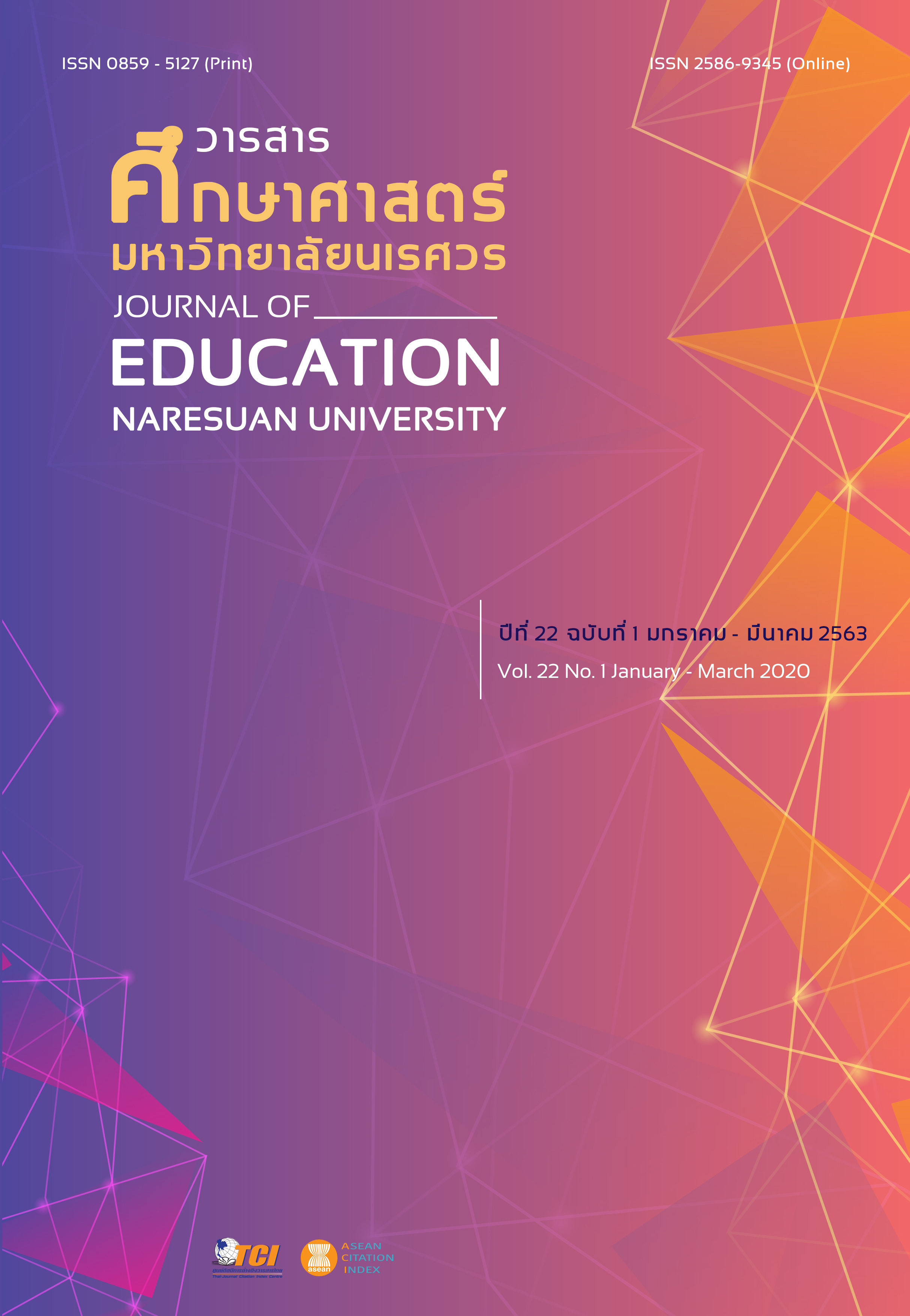A DEVELOPMENT OF COLLABORATIVE LEARNING MODEL USING PRINCIPLE OF BUDDHISM TO ENHANCE CITIZENSHIP FOR HIGH SCHOOL STUDENTS
Main Article Content
Abstract
The general objective of this study was to develop a learning model using principle of Buddhism to enhance citizenship for high school students. The specific objectives were 1) to study an approach to develop the learning model using principle of Buddhism to enhance citizenship for the high school students, 2) to create the learning model and find out its effectiveness index, and 3) to try out the learning model which comprising 3 purposes: 3.1) to compare citizenship value of the students, 3.2) to examine the process of the learning model using principle of Buddhism to enhance citizenship for the high school students, and 3.3) to find out students’ satisfaction after using the learning model. A sample was a group of Mattayom 5 students of Toongsaiwittaya School under the Secondary Educational Service Area Office 41 who were studying in a second semester in academic year 2017. The instruments were 1) a citizenship value test, 2) a learning process observation of the learning model using dharmic principle to enhance citizenship for high school students, and 3) a students’ satisfaction on the learning model using dharmic principle to enhance citizenship for high school students test and the study findings were:
1. The learning model was developed with approaches that involved students to work together and be responsible for learning by the various kinds of activity. Teacher must respect to their decision, help them to learn, be their advisor with democracy principle and give them a chance to speak and show their opinion. The steps of learning model development were: 1) Studying text books and researches which are implicated and querying the experts, and 2) Using the conclusion from the studying to set a guideline for learning model development comprising principles, purposes, contents, methods and measurement, then created sheets and documents for the learning model which measured in quality.
2. The principles of learning model focused on learning together as a team which comprising different students with different skills. It had them be responsible for the success of the team. Its purpose was to practice the students to think carefully, critically and deliberately which leaded to real situation and proper way to solve problem. This learning model was comprising 5 learning steps: 1) Proposing the situational context by using the principal of religious discussion, 2) Meeting and planning by using the principle of Catechism, 3) Brainstorming by using the four noble truths, 4) Presentation by using the principle of threefold training, and 5) Discussion and summarizing by using the principle of critical reflection. The examination result from the experts shows that the learning model was proper in the highest level. Its effectiveness index was 0.76
3. The result of implementing the learning model were 1) the students’ citizenship was higher than before using the learning model with .05 significant level, 2) The students learned by using social process, working together in a group of 4-6 people. They worked collaboratively, respected in the difference of each other and they were responsible. These students had the same purpose in common. They discussed, asked reasonably and systematically solved problems, and 3) students’ satisfaction on learning by using the learning model was in high level.
Article Details
The owner of the article does not copy or violate any of its copyright. If any copyright infringement occurs or prosecution, in any case, the Editorial Board is not involved in all the rights to the owner of the article to be performed.
References
Barkley, E. F., Cross, K. P., & Major, C. H. (2004). Collaborative learning techniques: A handbook for college faculty. San Francisco: Jossey-Bass.
Brufee, K. A. (1995). Collaborative learning Higher education, interdependence, and authority of knowledge. Baltimore: John Hopkins University Press.
Gokhale, A. (2000). Collaborative learning enhances critical thinking. Journal of Technology Education, 7. 10.1007/978-1-4419-1428-6_910.
Jaijan, N., Kaewurai, W., & Wiboonrungsan, S. (2017). A development of learning activity model based on constructive controversy theory to enhance ASEAN citizenship for high school students. Journal of Education Naresuan University, 19(1), 194-207. [in Thai]
Kaewurai, W. (2014). Research article on a development of learning management model for developing quality of learners leading to moral, wisdom and learning society. The Journal of Educational Research, Office of the Education Council, 2(2), 46-58. [in Thai]
Office of Social Development and Human Security. (2014). Social situation report and the security of the people of Phitsanulok Province. Bangkok: Office of The Ministry of Social Development and Human Security. [in Thai]
Office of the Education Council. (2010). Development strategy for civic education 2010-2018. Bangkok: Ministry of Education. [in Thai]
Phra Dhammapitaka (P. A. Payutto). (2003). Learning process for developing people towards democracy. (4th ed). Bangkok: Mahachulalongkornrajavidyalaya University Printing Press. [in Thai]
Rodsaen, A., Kaewurai, W., & Chanbanchong, C. (2016). The development of collaborative learning model to enhance citizenship instructional competences for basic education teachers. Journal of Education Naresuan University, 18(1), 95-105. [in Thai]
Unjai, K., Kaewurai, W., Prachanban, P., & Sawagpun, P. (2015). The development of curriculum to enhance citizenship for Thai youth focus on responsibility. Journal of Education Naresuan University, 17(4), 41-51. [in Thai]


